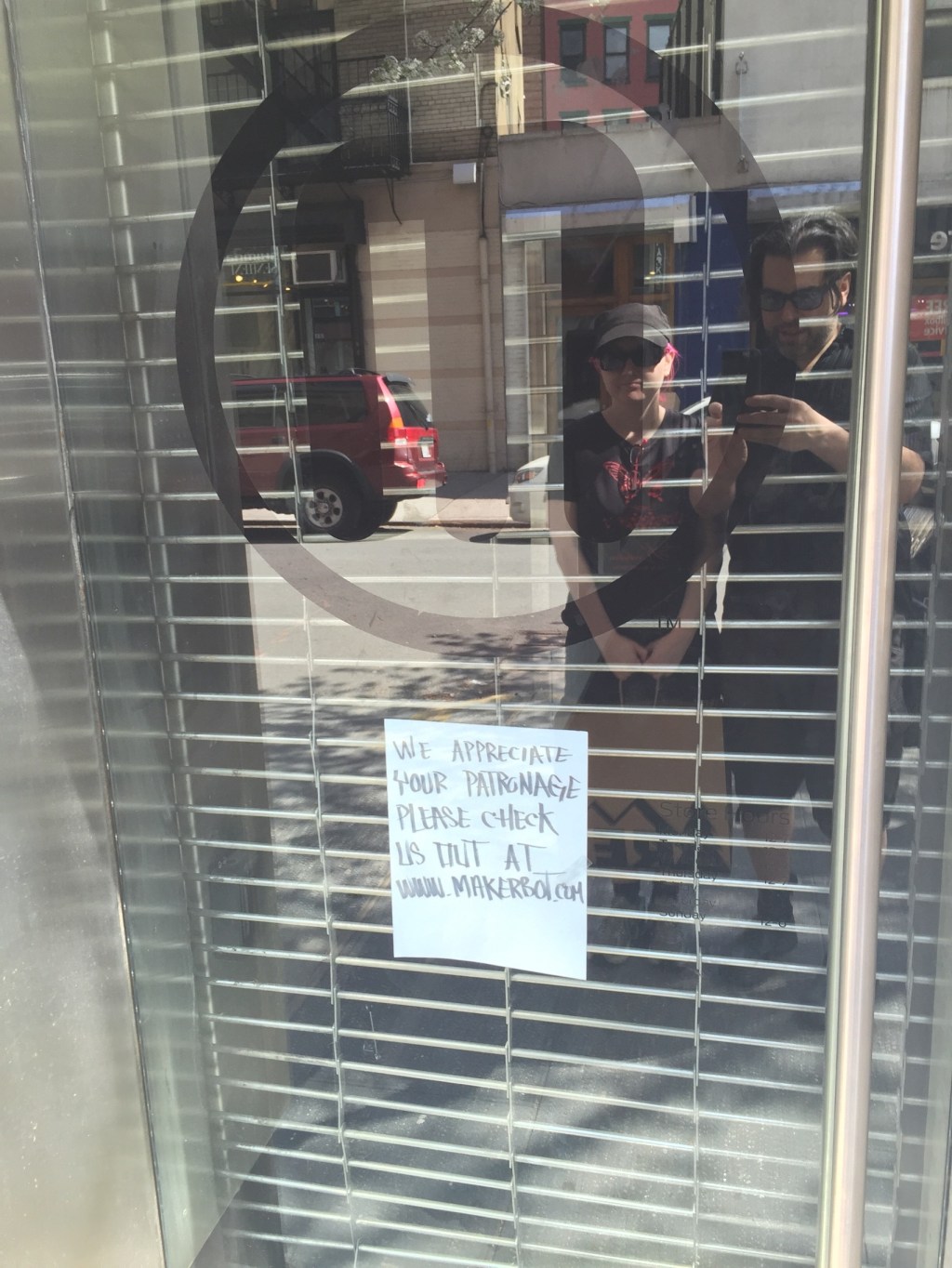
In the process of growth, startups change. They change from scrappy three-person operations to behemoths with new employees rolling in daily. They go on hiring sprees and the founders no longer know the people sitting at cubicles outside their offices. Bigger companies – Google and the like – start sniffing around. And those changes add up – going from 50 mph to lightspeed is as hard on the Millennium Falcon as it is on a manufacturing company. That’s what’s happening at Makerbot right now.
I’ve been speaking to a few people who prefer to remain anonymous and most of my contacts there are gone (the head of PR was apparently fired) and don’t want to talk. But the news from inside is troubling. The mass-layoffs are blamed on low revenue and one former employee wrote “Company was failing. Couldn’t pay vendors, had to downsize.” Do I think Makerbot will sink? At this point I don’t know.
The worst thing is that it has far to fall. Let’s look at what happened between a triumphant CES 2014 when the company looked to do no wrong to last week when about 100 people were laid off and most of the company’s flagship stores were shuttered.
First, we must remember that Makerbot has always been simultaneously lauded and fraught with controversy. The company – and former CEO Bre Pettis – appeared on the covers of a number of tech publications including Wired and Popular Science. It was a Brooklyn darling, beloved by New York makers for having the tenacity to manufacture right along the waterfront. I would argue that Makerbot was the main engine of growth for the manufacturing renaissance that is happening in New York now and that’s wildly important. Makerbot changed tech in Brooklyn.
But Makerbot also lost a lot of goodwill. Thanks to primarily specious claims of IP theft – which Pettis addressed publicly – the maker community turned on Makerbot. Why should they pay some fat cat capitalist for a 3D printer the average engineering student could build at home with a few hundred dollars in parts and a few months spent debugging? While that’s a bit hyperbolic, it was the truth: Makerbot made owning a 3D printer easy. It was not always a painless experience – I remember my first Replicator failing with a frustrating regularity – but when Makerbot began producing its own amazing software and released material improvements to their extruder and filament, all other printers fell by the wayside. Even my favorite non-Makerbot printer, from Zortrax, couldn’t match Makerbot in ease-of-use.
When Stratasys – a company that had little love for the home 3D printing market back in 2013 – bought Makerbot in that June for over $400 million the perception was that the bigger 3D printing company would leave the smaller one alone. They were paying for Makerbot’s image and coolness, its community and charisma. The Makerbot brand was – and still is – a major force in the 3D printing industry. People don’t buy 3D printers, they buy Makerbots (unless they’re the aforementioned engineering students.)
Throughout it all, however, Makerbot has always been my printer of choice. I’ve always loved the software – software easy enough for my nine-year-old to use – and I’ve loved what the brand stands for. Makerbots are magical. They looked cool, were well supported, and when things went wrong, the company, at least in my experience, tried to make it right. I’ve heard many horror stories and I’ve met plenty of happy customers. I bought my own 5th generation model and use it almost daily without issues.
That’s all changing. Now Stratasys has decided to take the reins and it’s not pretty. After replacing Pettis with a new CEO, Jenny Lawton,more musical chairs led to a minor employee exodus. Then, in February, Stratasys moved Lawton into a position inside the parent company and brought in a new internal hire, Jonathan Jaglom. Now Jaglom has begun the blood-letting.



